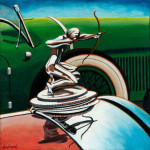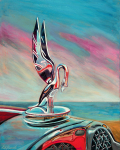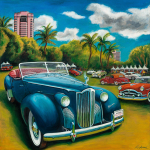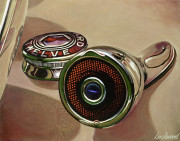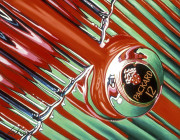Packard | Pierce-Arrow
Packard was an American luxury automobile marque built by the Packard Motor Car Company of Detroit, Michigan, and later by the Studebaker-Packard Corporation of South Bend, Indiana. The first Packard automobiles were produced in 1899, and the last in 1958. The marque developed a following among wealthy purchasers both in the United States and abroad.
The company was commonly referred to as being one of the “Three P’s” of American motordom royalty, along with Pierce-Arrow and Peerless. Peerless ceased production in 1932 and by 1938 Pierce-Arrow had closed , along with, Franklin, Marmon, Ruxton, Stearns-Knight, Stutz, and Duesenberg.
The Twin Six was introduced in 1932, and renamed the Packard Twelve in 1933. Later models include the Caribbean, Patrician and Clipper.
Packard had a better cash position than other independent luxury marques and also lower costs due to a single production line and interchangeability between models.
To address the Depression, Packard also introduced the medium-price range Packard 120 in 1935. This supplemented the high-priced “Senior” lines (Twelve, Super Eight, and Eight).
Pierce-Arrow Motor Car Company was an American automobile manufacturer which was active from 1901 to 1938. Although best known for its expensive luxury cars, Pierce-Arrow also manufactured commercial trucks, fire trucks, camp trailers, motorcycles, and bicycles.
In 1904 Pierce introduced a larger, more luxurious car for the upscale market, the Great Arrow. This became Pierce’s most successful product. The solidly built, four-cylinder car won the Glidden Trophy in 1905, an endurance run to celebrate the most reliable car.
In 1909 US President William Howard Taft ordered two Pierce-Arrows (and two White Model M Tourers) to be used for state occasions, the first official cars of the White House.
The Pierce-Arrow was a status symbol, owned by many Hollywood stars and tycoons. Most of the royalty of the world had at least one Pierce-Arrow in its collection.
Pierce was the only luxury brand that did not field a lower-priced car to provide cash flow, and without sales or funds for development, the company closed its doors in 1938.
Its final model was the Silver Arrow introduced in 1933.

